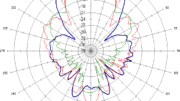Ah, those days back in 2015 when we worried about the simple things. Back in the fall of ’15 I asked if TV signals from other countries could be received with a US antenna. The world was a different place when that was the biggest concern we had, right?
The answer is simple, because practically every country in the world uses similar frequencies for TV broadcasting. An antenna designed for what we in the US call VHF and UHF is going to work pretty well to receive any other broadcast from pretty much any other country. At the same time, antennas made for global broadcasts work pretty well in the US, too.
Although it brings up the question…
You may ask why all television broadcasting isn’t the same everywhere. This is a question a lot of Americans ask. It’s partially driven by the fact that US, Mexican, and Canadian broadcast standards are the same. This makes Americans think that you could have one standard for the entire world.
Really though, Americans aren’t that far off. Broadcast standards and broadcast frequencies aren’t really that different from country to country. Because the broadcast spectrum is considered part of a country’s natural resources, the United Nations recognizes the right of every country to control its own broadcast frequencies and broadcast technologies. That said, it does make sense for neighboring countries to have respect for each other’s broadcasts. If there are interfering broadcasts from opposite sides of a border, no one really gets any reception at all.
Differing broadcast technologies
It really doesn’t make a lot of sense for different countries to develop their own broadcast standards. It never has. Historically, countries have followed either a standard developed in the US (NTSC), one from Britain (PAL), or one from France (SECAM). The broadcast standard defines everything about how a TV works, and re-engineering a new one is difficult. Seems like most countries are more than happy to let someone else do the work.
Today, there are three primary standards in use. Countries near the US use the ATSC standard, while countries in other parts of the country either use a standard called DVB-S2 or ISDB-T. These are all fairly similar technologies and as they evolve, they’re actually getting more similar.
Not only that, because today’s TVs are essentially computer monitors with tuners attached, it’s easier than ever to build in compatibility for multiple standards. Less expensive TVs are, surprisingly, more likely to have tuners that decode practically anything. It’s because it’s easier to create one television that will sell everywhere. The only difference from country to country is often the shape of the plug. In many cases though, technologies that aren’t used are turned off in software to conform with local laws.
Will there ever be one global broadcast standard?
No.
It’s just one of those things we have to live with, I guess.





